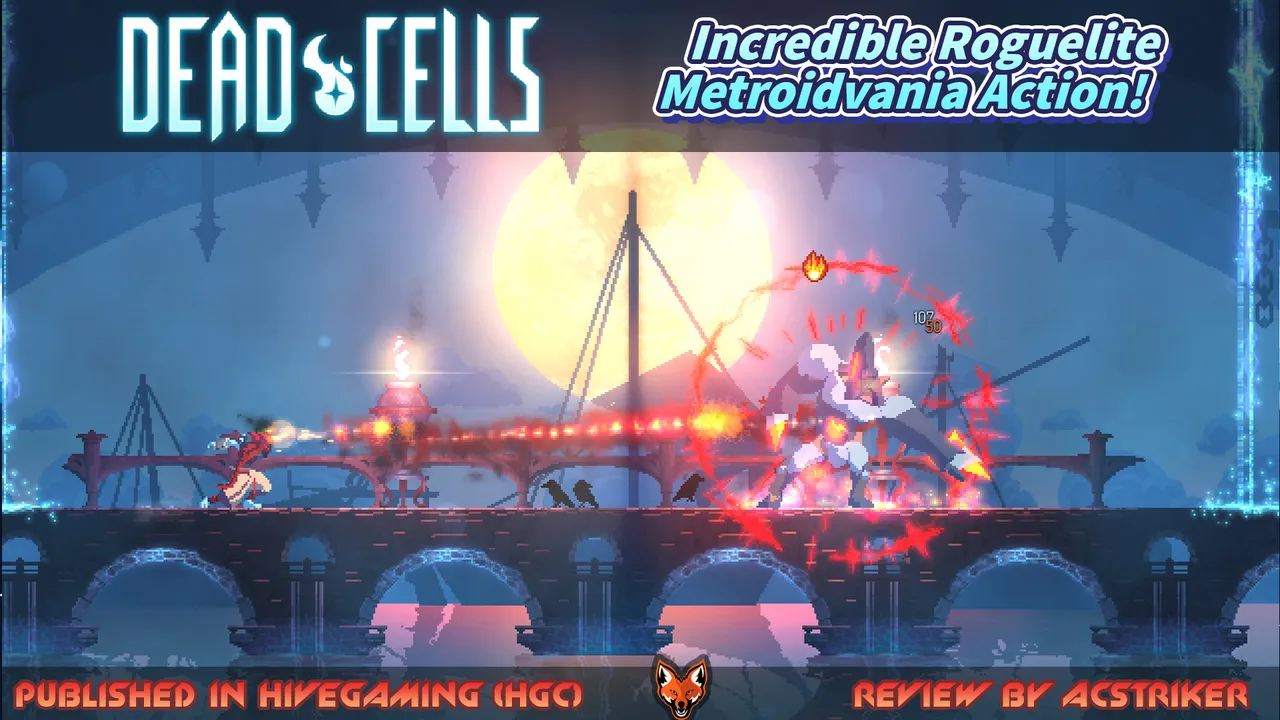
This post is avaliable in English and Spanish (translated with DeepL). All screenshots captured by me.
Este post esta disponible en Inglés y Español (traducido con DeepL). Todas las fotos capturadas por mí.
English
A game that Nino20G (the buddy I played Terraria with last week) recommended me some few years ago, Dead Cells is a quite impressive game in many ways, offering a balanced dose of accesibility and challenge paired with an excellent presentation and, impressively enough, works well on low-end systems!
The game begins as you come as a mass of cells squirming into a dead body, and then you take control the body (except that your head is now a glowing orb of fire), tying the premise of the world with the gameplay itself. Being a roguelite, the level layouts are always randomized and you have one attempt on a run, but dying would take you back to this starting point exactly as it begun: Squirming as a pile of cells back into your body to attempt exploring outside once again.
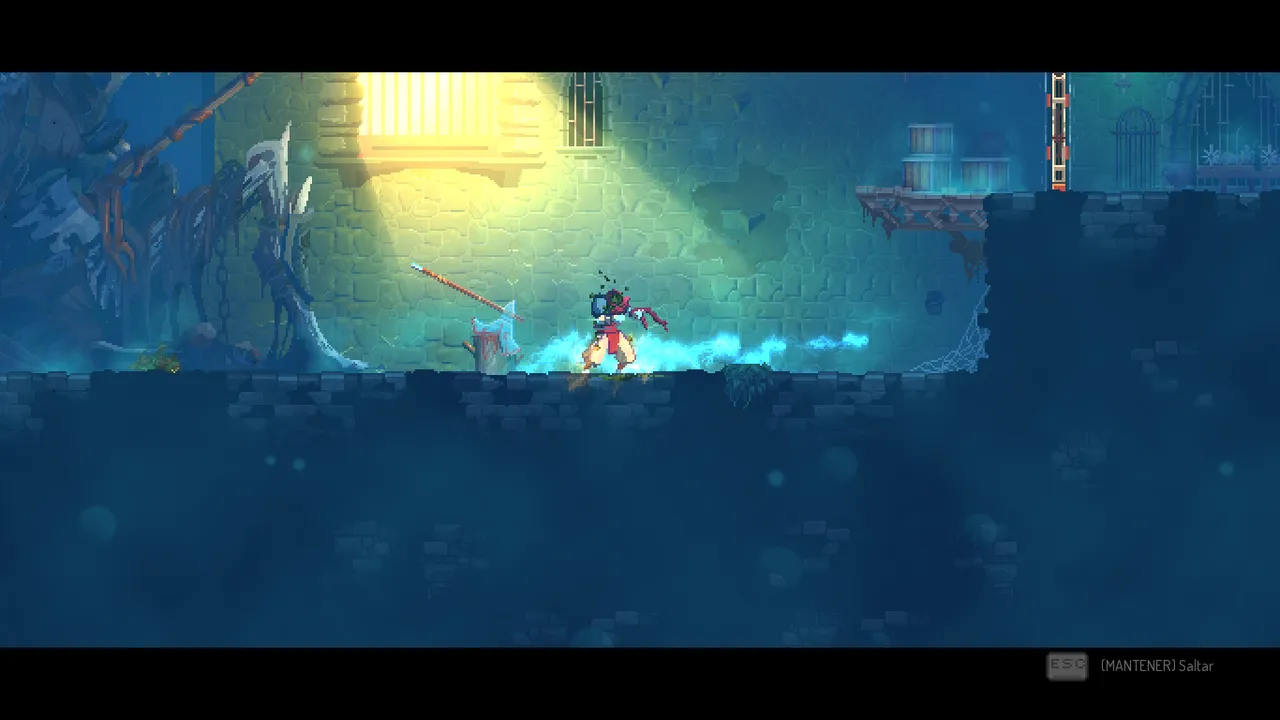
At the beginning, you always start with a basic sword and bow, which get you quickly going with the controls: Two weapon slots, two trap slots (which you can find on levels along with weapons), and a potion slot that you'll eventually get during your first runs. Being a take on Metroidvanias as well, you can find both blueprints for new weapons and items, as well as permanent upgrades that let you take certain alternate exits in levels.
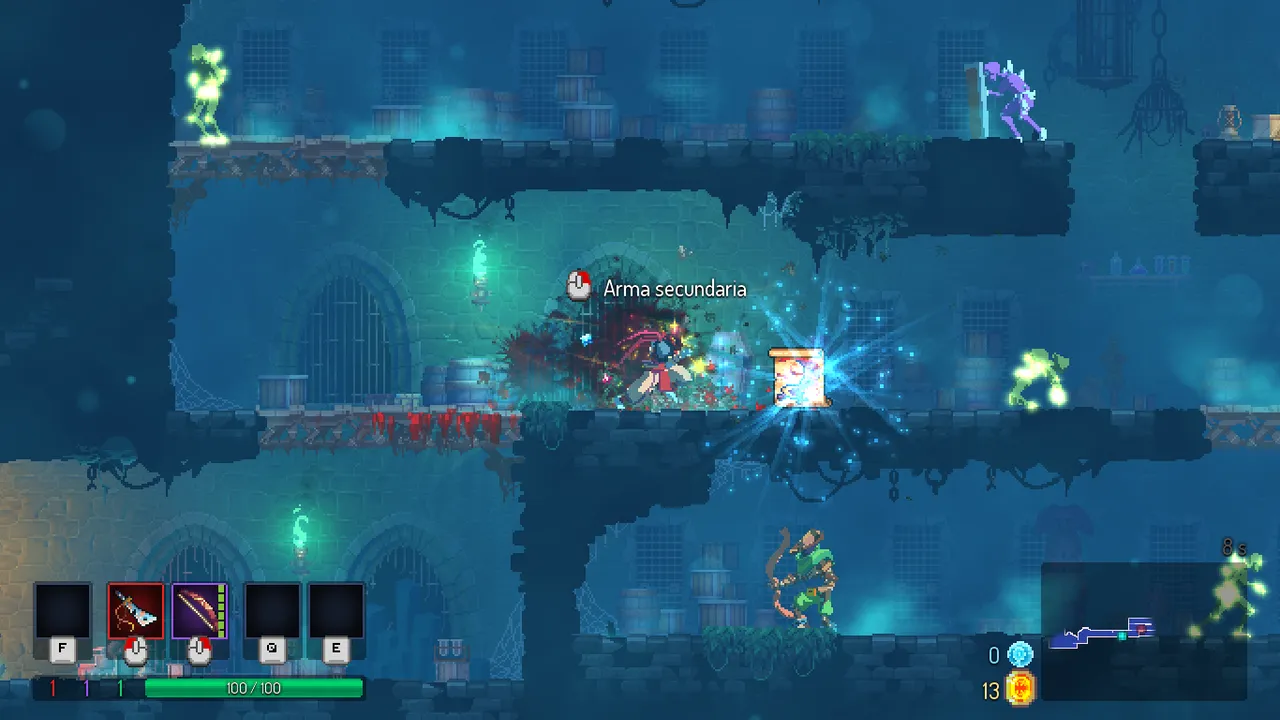
You will also find upgrade scrolls, which can boost one out of three main stats: Brutality, Tactics and Survival. As weapons and traps are also color coded (with one or two colors), increasing a stat of a certain color will increase the damage of weapons that use said color, with the most basic example being that increasing Brutality (red) would make your starting sword cause more damage, as well as any red weapons. Each upgrade also gives you an increase of maximum health, which can change depending of how your stats are at that point.
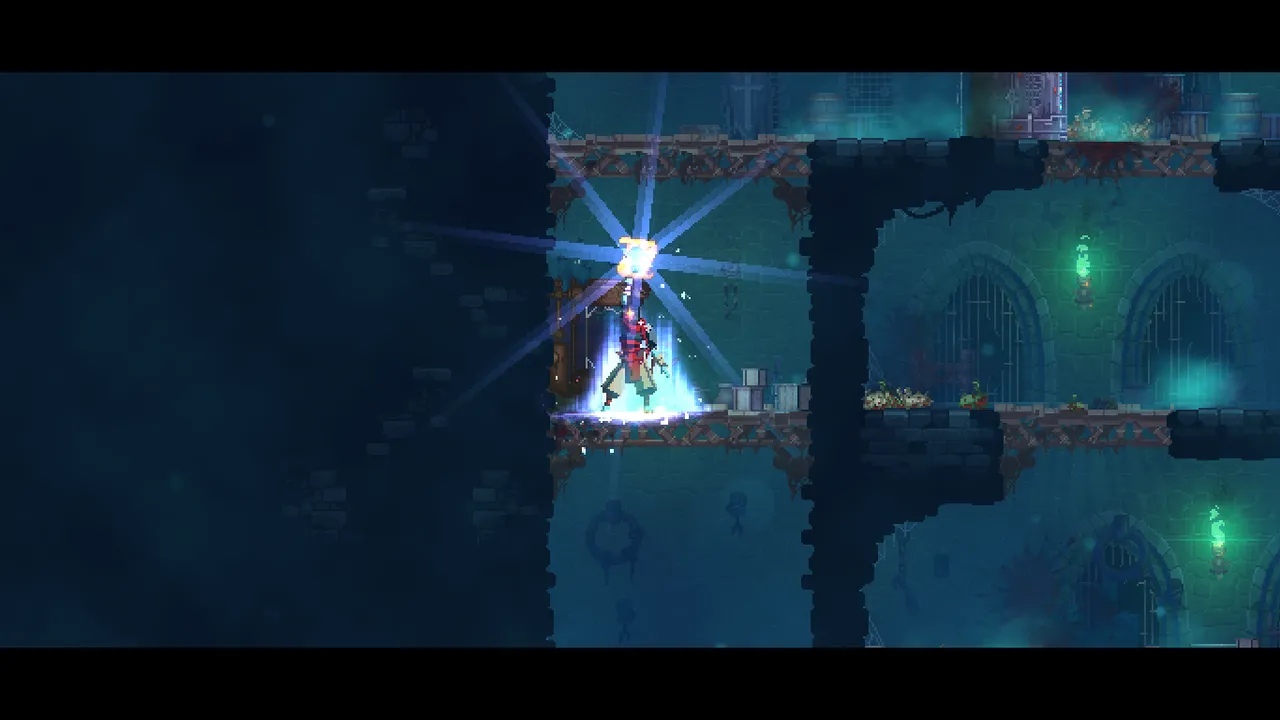
The gameplay feels incredibly intuitive, as your character is quite agile and also able to roll and attack (which is seemingly inspired from Dark Souls), and the varying weapons let you use different approaches with enemies and bosses (slow but hard hitting maces, fast daggers and lightning bolts, or fighting from distance with bows and traps). Paired with the great visual and sound effects at work,combat is truly satisfying here.
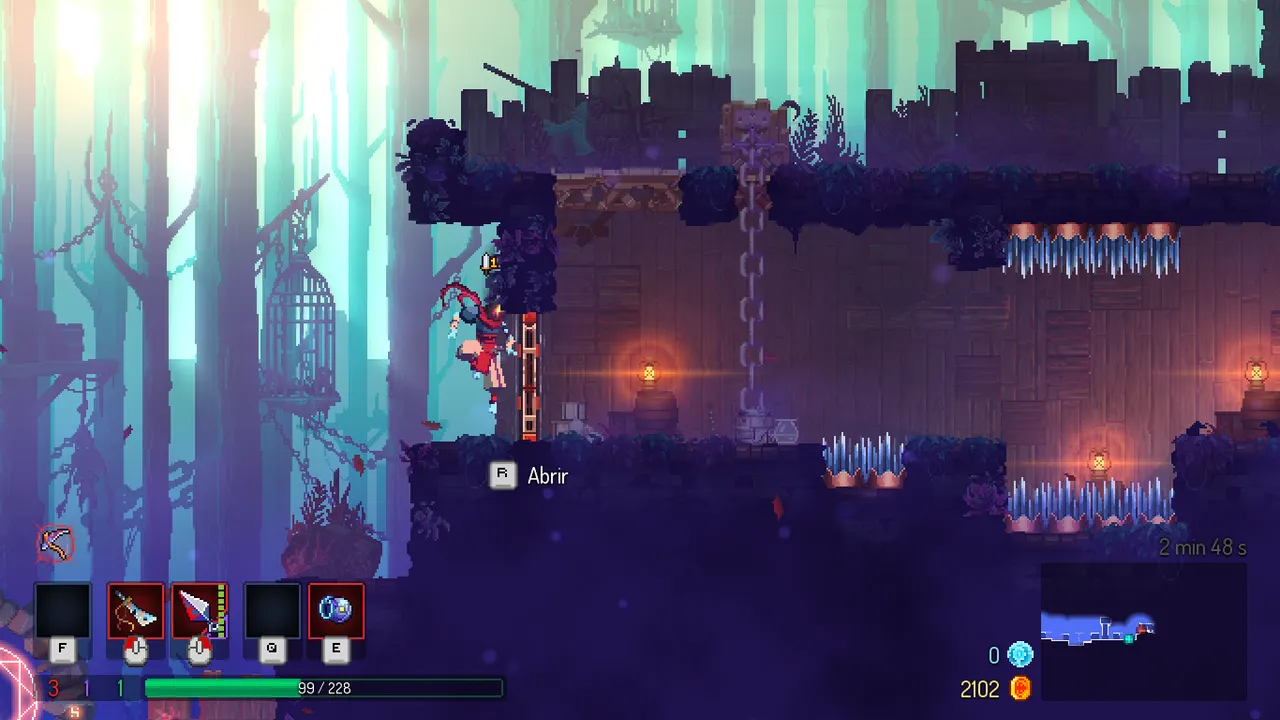
On each checkpoint you get, you can spend the cells you get from enemies to unlock permanent upgrades like health potions, keeping money after a death, and unlocking any blueprints you found to make the weapons appear on runs.
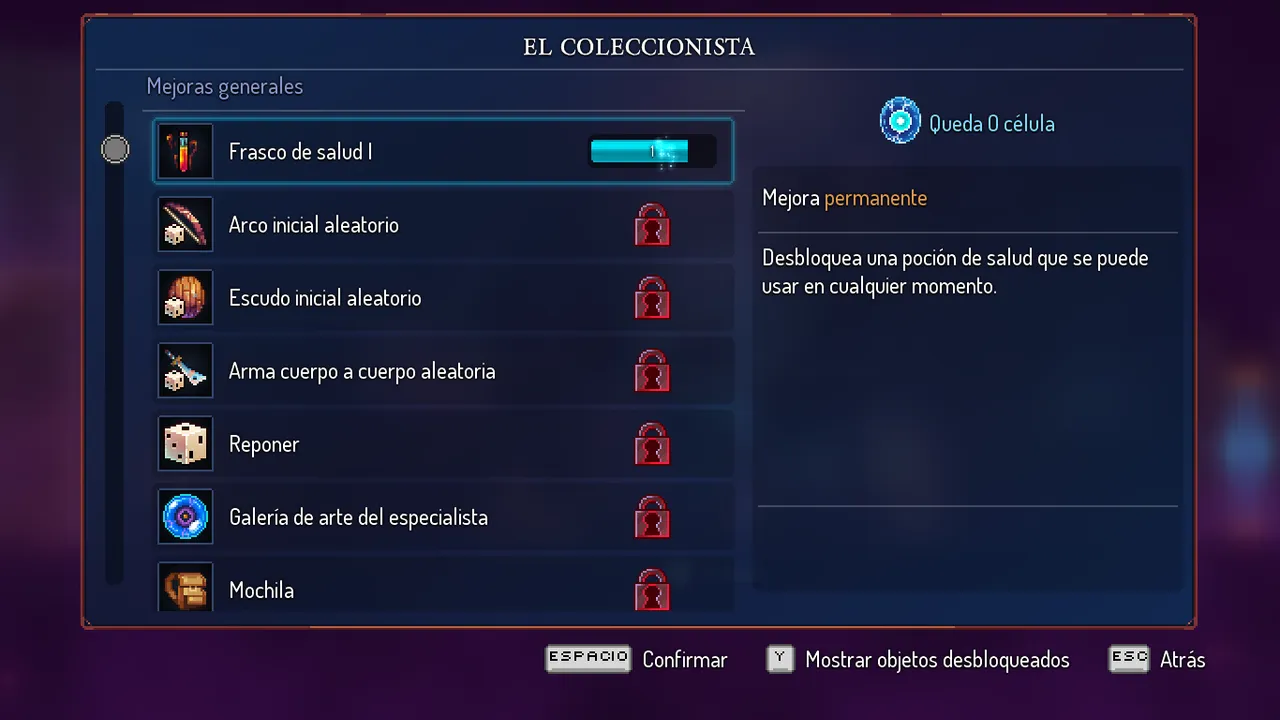
Filled with tons of replayability due to its nature and upgrades (as well as unlockable extra difficulties and daily challenges), atmospheric music and incredible pixel art graphics, this is definitely a game that will keep you playing for a long time.
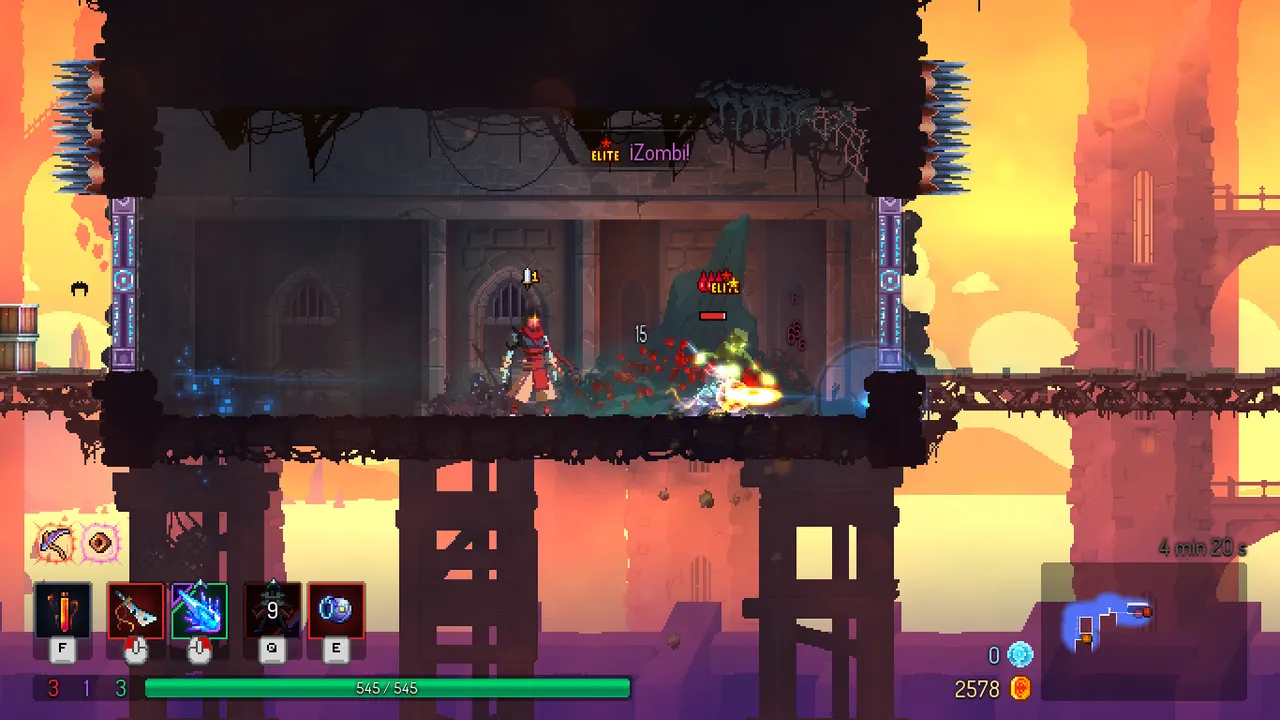
Español
Un juego que Nino20G (el amigo con el que jugué a Terraria la semana pasada) me recomendó hace unos años, Dead Cells es un juego bastante impresionante en muchos sentidos, que ofrece una dosis equilibrada de accesibilidad y desafío junto con una excelente presentación y, lo que es impresionante, ¡funciona en sistemas de gama baja!
El juego comienza como una masa de células que se retuercen en un cuerpo muerto, y luego tomas el control del cuerpo (excepto que tu cabeza es ahora un orbe de fuego resplandeciente), vinculando la premisa del mundo con la propia jugabilidad. Al tratarse de un roguelite, los diseños de los niveles son siempre aleatorios y tienes un solo intento en una carrera, pero morir te llevaría de vuelta a este punto de partida exactamente como empezó: Retorciéndote como un montón de células de vuelta a tu cuerpo para intentar explorar el exterior una vez más.

Al principio, siempre empiezas con una espada y un arco básicos, con los que te haces rápidamente con los controles: Dos ranuras para armas, dos ranuras para trampas (que puedes encontrar en los niveles junto con las armas) y una ranura para pociones que acabarás consiguiendo durante tus primeras carreras. Al tratarse también de una toma de Metroidvanias, puedes encontrar tanto planos para nuevas armas y objetos, como mejoras permanentes que te permiten tomar ciertas salidas alternativas en los niveles.

También encontrarás pergaminos de mejora, que pueden potenciar una de las tres estadísticas principales: Brutalidad, Táctica y Supervivencia. Como las armas y las trampas también están codificadas por colores (con uno o dos colores), el aumento de una estadística de un determinado color aumentará el daño de las armas que usen dicho color, siendo el ejemplo más básico que el aumento de Brutalidad (rojo) hará que tu espada inicial cause más daño, así como cualquier arma roja. Cada mejora también te da un aumento de la salud máxima, que puede cambiar dependiendo de cómo estén tus estadísticas en ese momento.

La jugabilidad es increíblemente intuitiva, ya que tu personaje es bastante ágil y también puede rodar y atacar (lo que parece inspirado en Dark Souls), y las distintas armas te permiten utilizar diferentes enfoques con los enemigos y los jefes (mazas lentas pero de fuerte impacto, dagas rápidas y rayos, o luchar a distancia con arcos y trampas). Junto con los magníficos efectos visuales y sonoros, el combate es realmente satisfactorio.

En cada punto de control que consigas, podrás gastar las células que obtengas de los enemigos para desbloquear mejoras permanentes, como pociones de salud, mantener el dinero tras una muerte y desbloquear los planos que hayas encontrado para que las armas aparezcan en las carreras.

Lleno de toneladas de rejugabilidad debido a su naturaleza y mejoras (así como dificultades extra desbloqueables y desafíos diarios), música atmosférica e increíbles gráficos pixel art, este es definitivamente un juego que te mantendrá jugando durante mucho tiempo.
